All about Orthodox tattoos
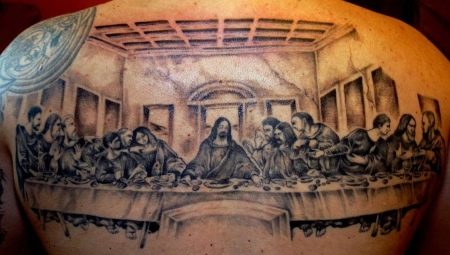
People in ancient times stuffed tattoos as a sign of faith or as an amulet. Such a tattoo indicates the confessional affiliation of its owner. Therefore, if you are going to apply such an image to your body, you must be completely sure that you will not change your religion over time.
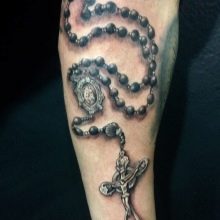

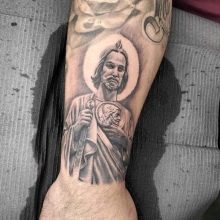
Peculiarities
Orthodox themes are perhaps the most controversial... In the classical Christian tradition, there is no unequivocal opinion on this issue, all responsibility for the selection of tattoos with religious symbols rests entirely with the owner of the tattoo.
The ROC does not approve of the application of any symbols of faith on the body, but at the same time it does not establish prohibitions. At the dawn of the birth of Christianity, tattoos with the name of Christ or the image of his face were allowed. Tattoos with crosses on the chest among the crusaders were especially widespread, especially often they stuffed them before campaigns. Therefore, the practice of religious symbols on the body has its own historical experience.
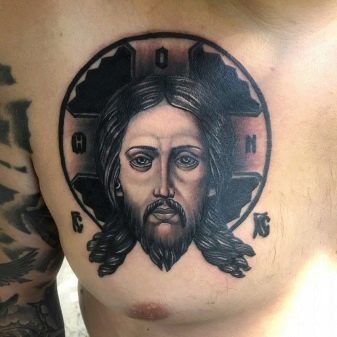
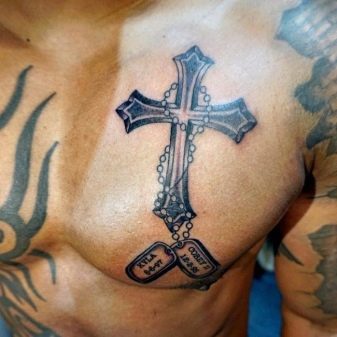
But in the Old Testament book of Leviticus there is a reference to the prohibition of pricking texts and images of religious content on the skin. Some theologians point out a different reason for the ban on tattoos in Orthodoxy. This teaching often designates the human body as "God's temple", which means that you cannot defile it at your own will.
Obviously, there is no consensus on the admissibility of using Orthodox symbols in tattoos - neither in the church, nor in society.
Only one thing is known for certain: images of this kind are relevant among believers.

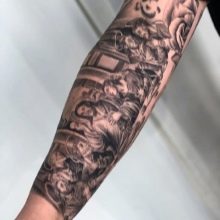
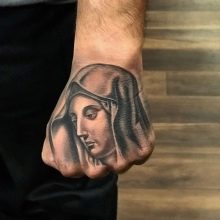
In past centuries, Christian symbolism on the body was perceived as a talisman.She protected her owner from adversity and setbacks in military battles. Today these drawings serve other purposes, namely:
- tribute to religious traditions;
- demonstrating your faith in God;
- protection from external negativity and bad deeds;
- to attract attention.
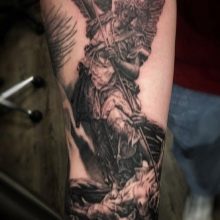


Types and sketches of tattoos
Tattoos with Christian symbols today are considered a fairly common area of underwear painting. Such symbolism has its own sacred interpretation and a special subtext for believing Christians. Let's take a closer look at the most common plots.
Crosses
Initially, the cross on the skin was stuffed by medieval knights. In the Middle Ages, it was believed that such a sign protects brave warriors in battle and attracts success to their side. Most often, the image was applied in the chest area or on the back. Today tattooists offer several types of crosses:
- with rosary - indicates the absolute faith of the owner of the tattoo;

- with stone - speaks of the search for the meaning of life and its purpose;
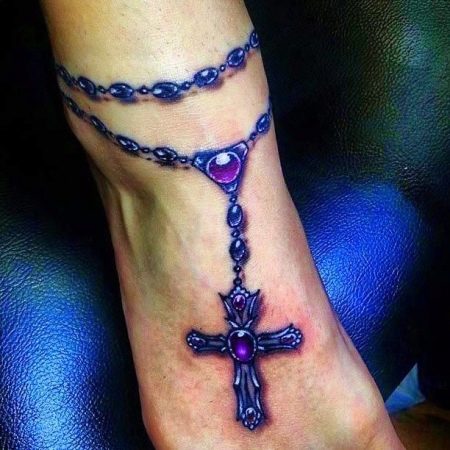
- katyn - personifies the memory of people who left this world;
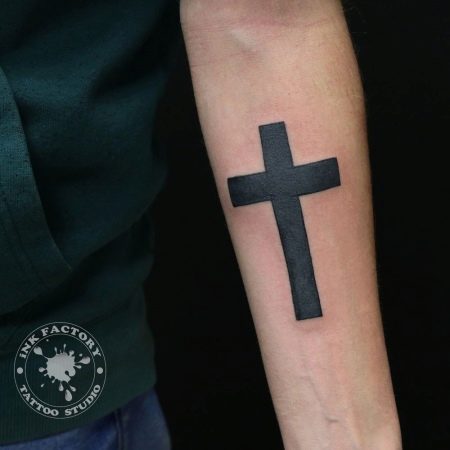
- Celtic - serves as a symbol of the connection of all phenomena in the world;
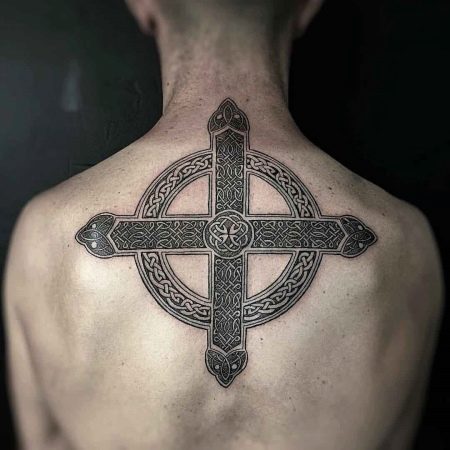
- chivalrous - a sign of valor, honesty and physical strength;
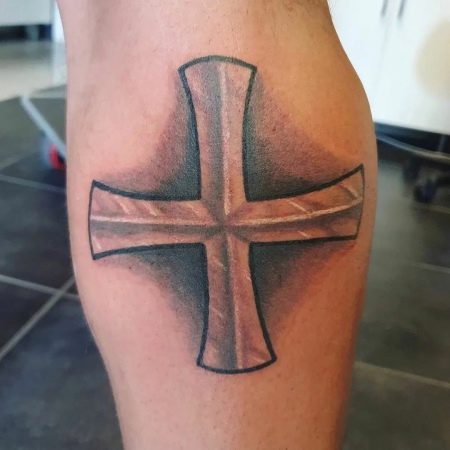
- Peter's cross - indicates sincere faith in the Lord, reverence and respect;

- baptismal - associated with the theory of the immortality of the soul.

Angels
This is a very symbolic Christian drawing. He personifies the purity of the soul and faith in God. The interpretation of this symbol directly depends on the storyline of the tattoo:
- archangel - will become a talisman against dark forces;

- cherub - personifies innocence and spiritual purity;
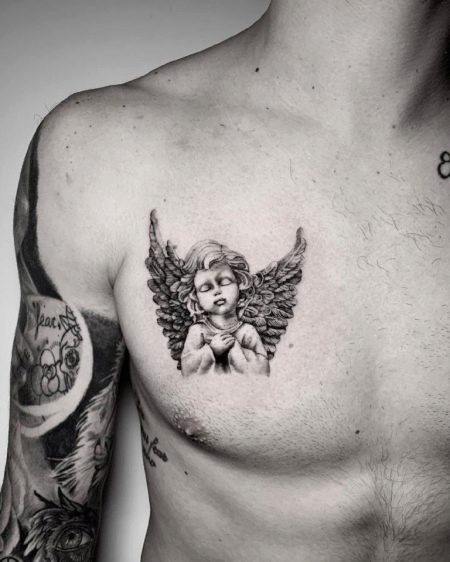
- Angel of Death- indicates the fear of imminent death, or, on the contrary, is associated with a person's willingness to leave this world;
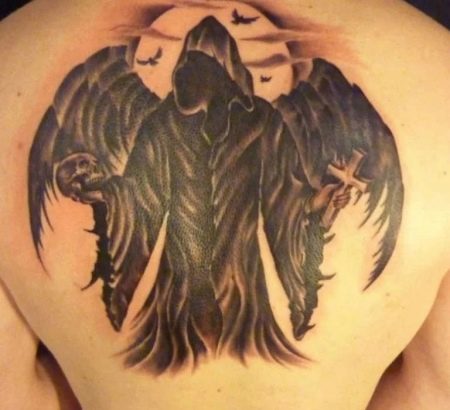
- fallen Angel - is interpreted as repentance for one's own sins.
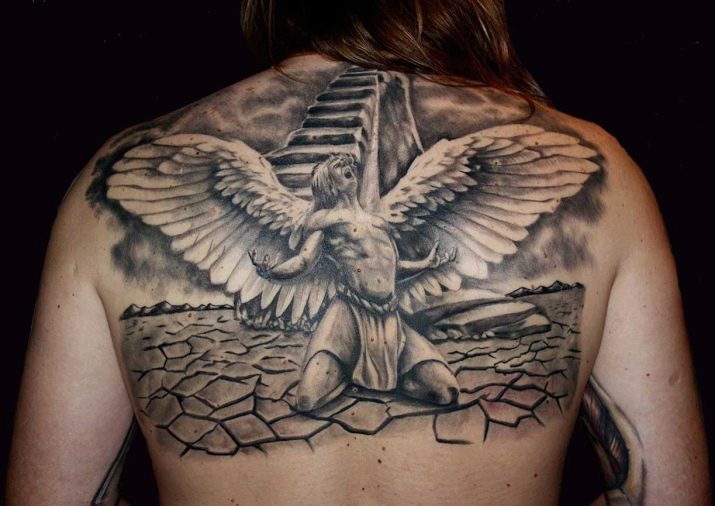
The theme of an angel and a demon is quite common.... Such a tattoo symbolizes two sides of every person's life: dark and light, good and evil.
They are constantly fighting with each other to take control of the owner of the tattoo.
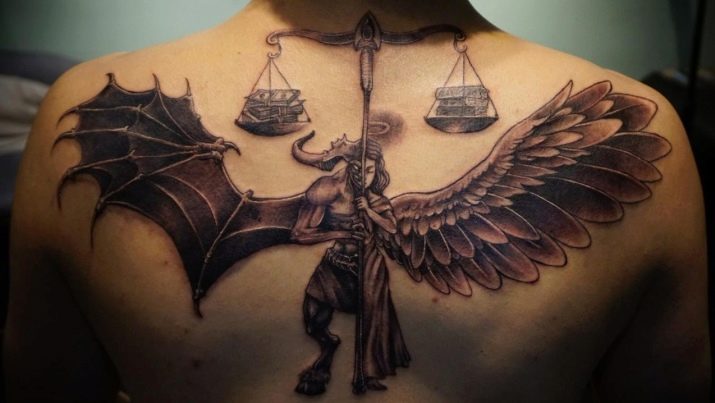
the Virgin Mary
The image of the Blessed Virgin, stuffed on the body, indicates the desire of the owner of the tattoo to cleanse himself of sins, to achieve forgiveness and closeness to the Almighty. In addition to the Mother of God, sketches of the Crucifixion of Christ, the Father and the Son and the Holy Spirit are often stuffed on the body.
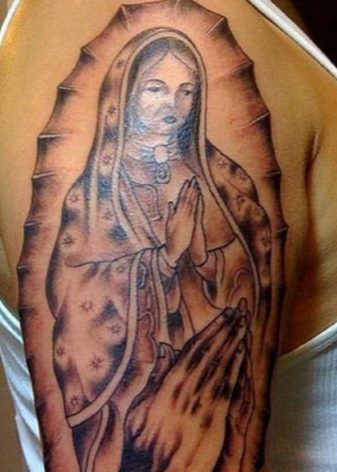
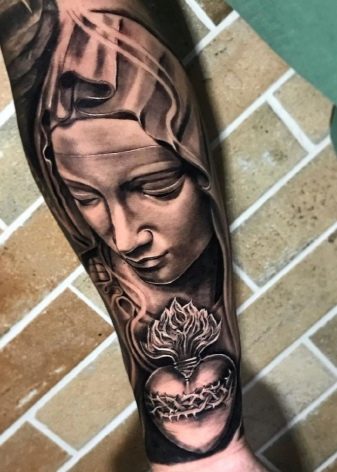
Symbols
A variety of images associated with Christian teaching are used as Orthodox symbols:
- the Rose - the personification of innocence, spiritual purity and martyrdom;
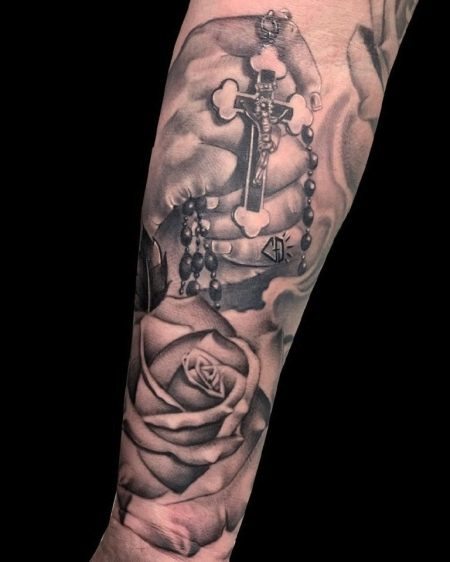
- lamb - symbolizes sacrifice and absolute obedience;
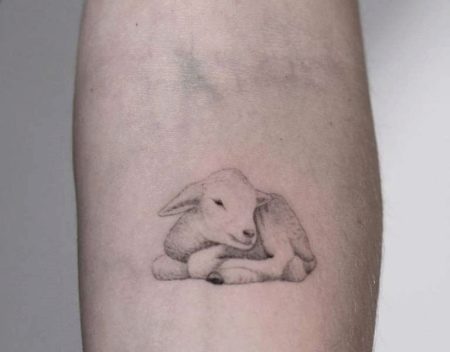
- anchor - is considered a tribute to deceased people;
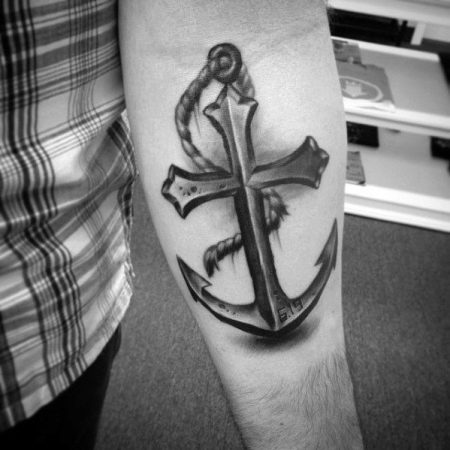
- pigeon - means the gift of hope and sincere faith in a miracle.
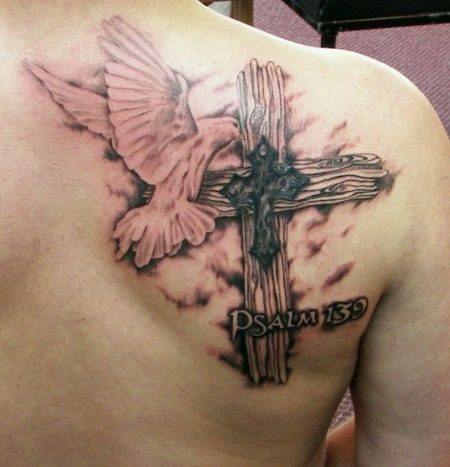
Prayers
From time immemorial, people have tried to protect themselves from dark forces and misfortunes, so prayer has always had weight for any believer. The fashion for sacred texts and the art of tattooing did not pass by. This image carries several meanings.
An appeal to the Lord is the most important interpretation. Regardless of the text of which prayer is stuffed on the body, first of all these are words addressed to the Lord. At the same time, often not the whole prayer is used in its entirety, but only part of it.
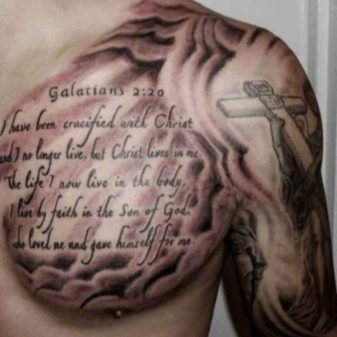
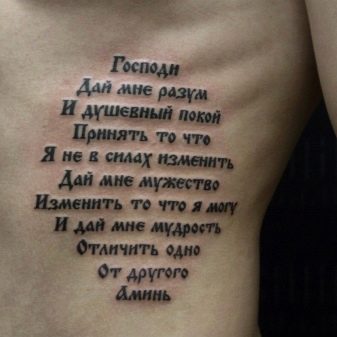
Attitude towards the Christian religion - it is obvious that a person who is far from Orthodoxy will not prick such a tattoo on his body.
Memory of a life situation - this option is used in the case when a certain prayer helped a person to overcome difficulties and trials. The sacred text in this case means gratitude. Moreover, it expresses it not only to God, but also to all those people who were close to a person and supported him.
The most common prayer is "Our Father" in Russian or in Latin with translation.
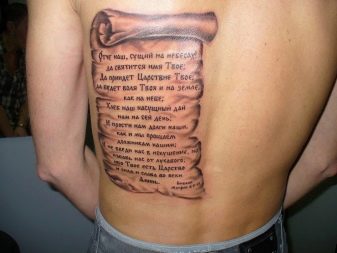
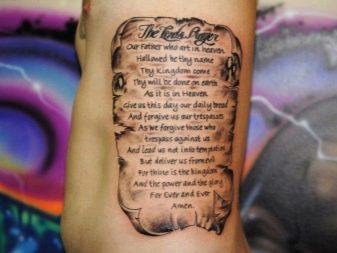
Styles and colors
The most popular style when using tattoos in the Orthodox theme was realism... It is characterized by a detailed drawing of all the elements of the picture.Such a tattoo turns out to be more like a photograph than a wearable pattern.
Some types of images are stuffed in the blackout style - most often they are crosses... In this case, the skin is completely painted over. Slightly less widespread watercolor stylistics, it is in demand when applying Orthodox symbols (dove or roses).
In this case, the picture resembles a drawing with its bright colors, gradient transitions, strokes and streaks.
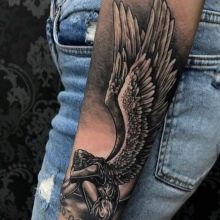

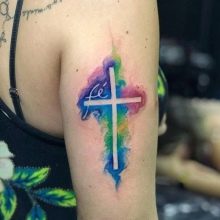
Image tips
The Bible literally prohibits tattoos in honor of dead or living people. All other topics and plots are not contraindicated. It should also be noted that the Holy Scriptures prohibit making cuts on the body of priests. Therefore, the choice of a tattoo with religious symbols directly depends on the meaning of this drawing.
Orthodox images are chosen by people who are forced to live in a society where a different faith is professed. They often pierce the image of a cross on the skin. This symbol is used as a mark of distinction for others, allowing after death to bury the owner of the tattoo in accordance with Christian, not Muslim tradition.



Orthodox tattoos can be different. The only taboo is the use of the Christian symbol as a common decorative body ornament. The use of a tattoo for thoughtless opposition to society is not allowed. It should be understood that such options are made only by people who sincerely believe in God, who want to embark on the path of repentance and purification from sins. A tattoo with Orthodox symbols becomes for people a kind of sign of rejection of sinful thoughts and deeds. That is why believers choose a sketch so that it would be extremely accurate to indicate the feelings that overwhelm him.
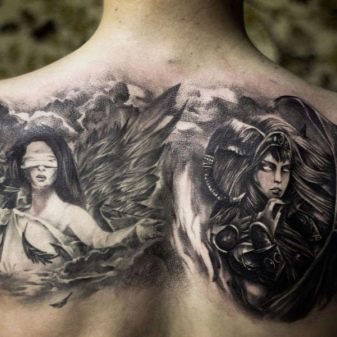
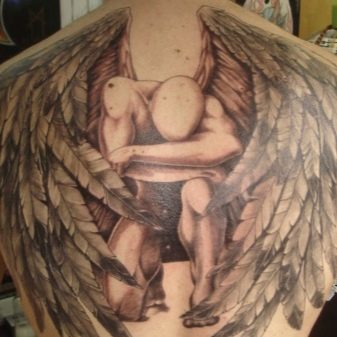
Location options
When choosing a place for a tattoo, it must be borne in mind that such symbolism by the people around it can be perceived in completely different ways. It so happened that certain sketches are stuffed on specific areas of the body. If the tattoo carries a sacred essence, it is applied to significant areas. And if she describes her owner, then they are stuffed in places hidden from the views of others.
The following places are most in demand for religious symbolism.
- Shoulder - on this site, the image of a person's hands folded in prayer is usually stuffed, thus the owner of the tattoo emphasizes courage and spiritual strength. Also on the shoulder you can find images of the images of saints.
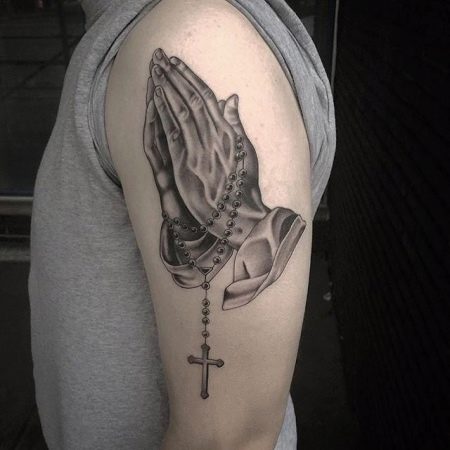
- Forearm - this place is used to represent the great saints and the gates of heaven. The drawing in this place personifies a person's craving for God.
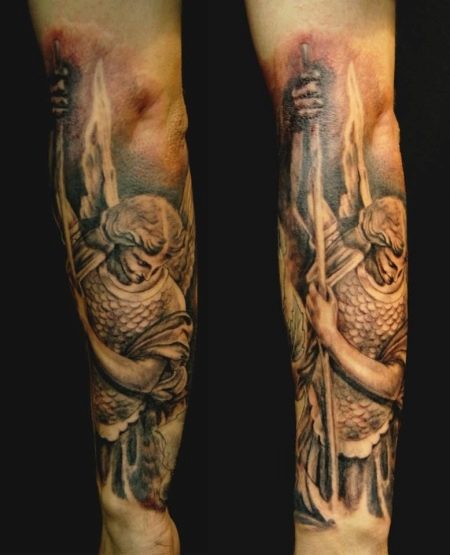
- Wrist - the best images for this part of the body will be religious attributes of small sizes, here they are pricked with roses, anchors, birds and, a little less often, crosses.

- Brush - Orthodox symbols are often stuffed on the edge of the palm.
On the palms, you can, if desired, place a passage from a prayer or a line of Scripture.

- Neck - inscriptions, crosses and other Orthodox attributes are stuffed here.

- Breast - this place is suitable for large tattoos, as a rule, these are wings, inscriptions and sketches in the form of an icon. It is believed that the tattoo in this place is a powerful amulet for its owner.
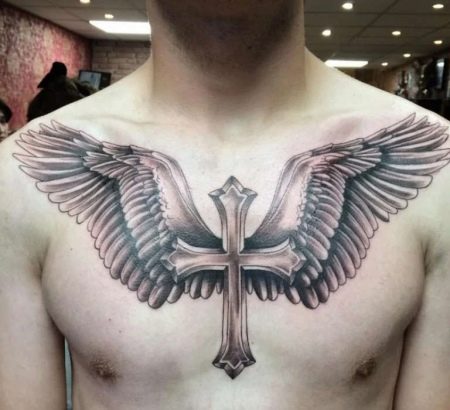
- Back - the most popular tattoo in this area are the wings of an angel; the Trinity, the crucified Jesus and church domes are less common. The symbolic message of such a tattoo is associated with the burden that a person carries.
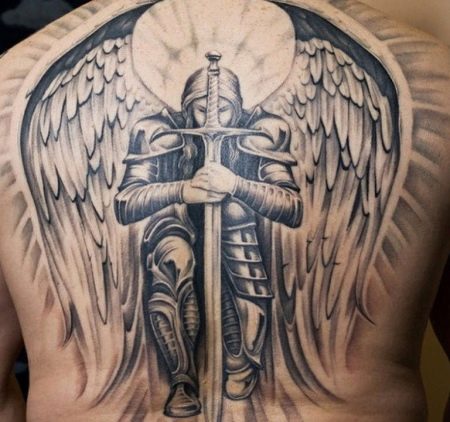
But the legs and hips are not used for Orthodox tattoos. It is believed that they are intended for sketches, which are intimate.








